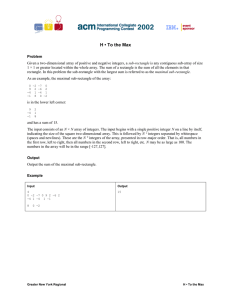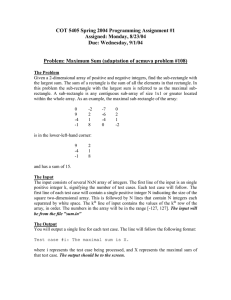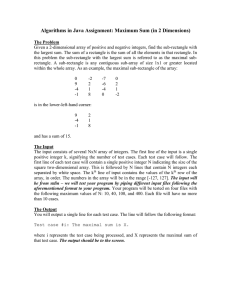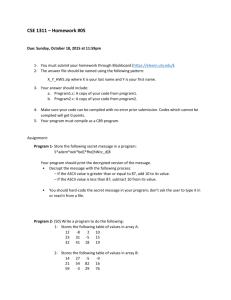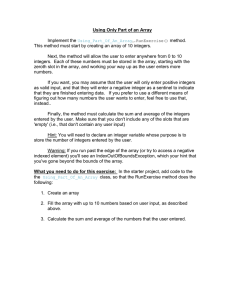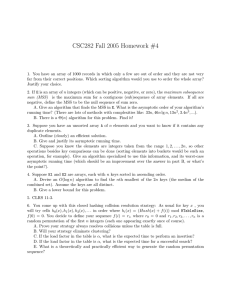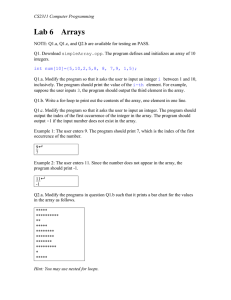108 Maximum Sum - UVa Online Judge
advertisement
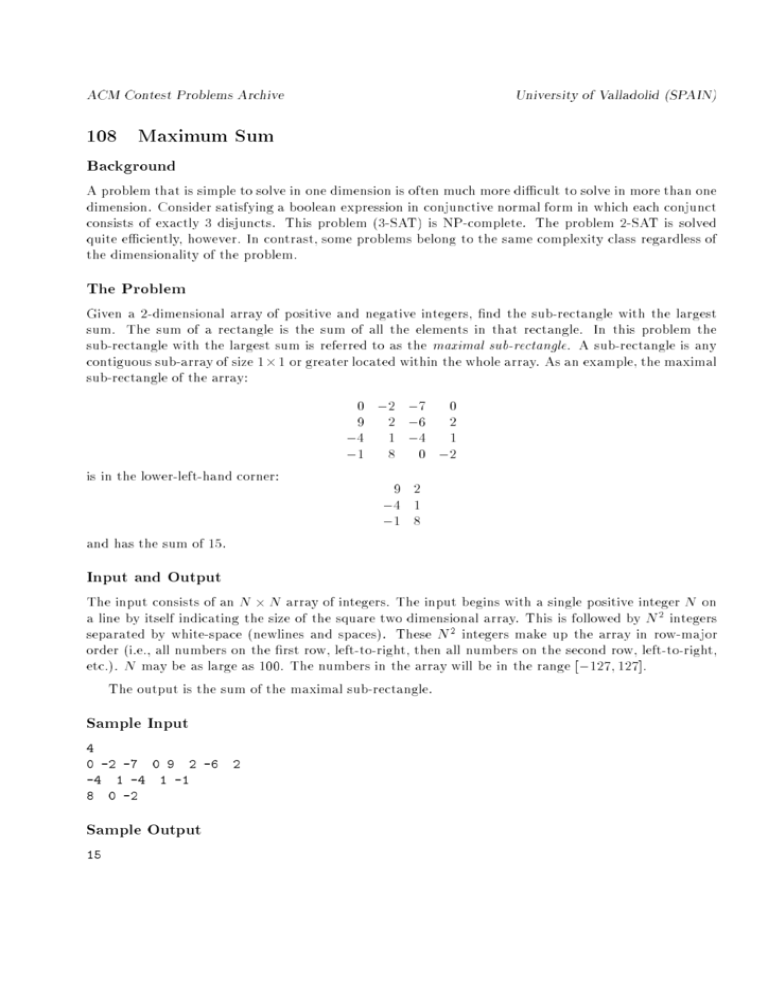
ACM Contest Problems Archive University of Valladolid (SPAIN) 108 Maximum Sum Background A problem that is simple to solve in one dimension is often much more dicult to solve in more than one dimension. Consider satisfying a boolean expression in conjunctive normal form in which each conjunct consists of exactly 3 disjuncts. This problem (3-SAT) is NP-complete. The problem 2-SAT is solved quite eciently, however. In contrast, some problems belong to the same complexity class regardless of the dimensionality of the problem. The Problem Given a 2-dimensional array of positive and negative integers, nd the sub-rectangle with the largest sum. The sum of a rectangle is the sum of all the elements in that rectangle. In this problem the sub-rectangle with the largest sum is referred to as the maximal sub-rectangle. A sub-rectangle is any contiguous sub-array of size 1 1 or greater located within the whole array. As an example, the maximal sub-rectangle of the array: is in the lower-left-hand corner: and has the sum of 15. Input and Output 0 ?2 ?7 0 9 2 ?6 2 ?4 1 ?4 1 ?1 8 0 ?2 9 2 ?4 1 ?1 8 The input consists of an N N array of integers. The input begins with a single positive integer N on a line by itself indicating the size of the square two dimensional array. This is followed by N 2 integers separated by white-space (newlines and spaces). These N 2 integers make up the array in row-major order (i.e., all numbers on the rst row, left-to-right, then all numbers on the second row, left-to-right, etc.). N may be as large as 100. The numbers in the array will be in the range [?127; 127]. The output is the sum of the maximal sub-rectangle. Sample Input 4 0 -2 -7 0 9 2 -6 2 -4 1 -4 1 -1 8 0 -2 Sample Output 15
